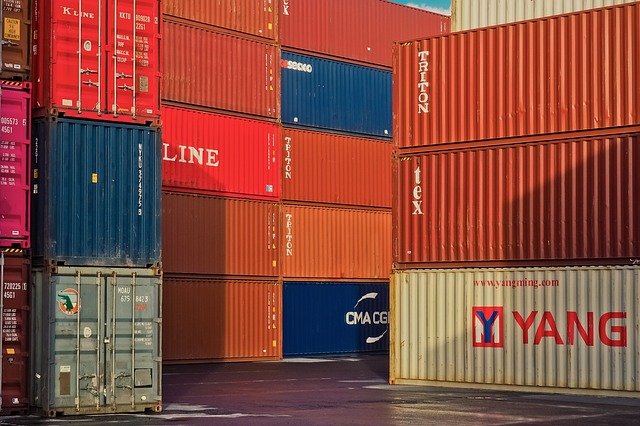
-
The Container Depot Alliance of the Philippines (CDAP) expects a “slightly better” year in 2021 compared to last year as more economic activities resume
-
Container yard congestion, particularly in Metro Manila, remains as the top challenge of the sector this year
-
Repositioning of empty containers practically at a standstill
-
To help alleviate truck queuing at depots, CDAP has introduced its Truck Advance Booking System, which allows truckers to register their preferred time to be serviced by a container depot
-
CDAP is hoping for government assistance such as free interest loans to modernize equipment
The Container Depot Alliance of the Philippines (CDAP) expects a “slightly better” year in 2021 as more economic activities have resumed compared to last year when strict government restrictions were first imposed to control the COVID-19 pandemic.
CDAP president Roger Torres, in an email to PortCalls, said they are seeing an increase in the manpower of manufacturing companies, which has led to an expansion in production of goods after being stunted last year by the lack of warm bodies.
In addition, more services, such as restaurants, have reopened, while online selling or e-commerce has become part of the new normal, leading to a spike in the volume of imported goods that are normally not found in traditional supermarkets.
Despite expecting 2021 to be better, CDAP does not see many opportunities this year.
“Maybe if we could contain the pandemic in the second quarter of the year, there could [be] more imports and exports in the last quarter, which would redound to the benefit of the container yard industry,” Torres said.
Yard congestion persists
Container yard congestion, particularly in Metro Manila, remains the top challenge of the sector this year.
Torres explained that most shipping lines still prefer their empty containers to be returned to depots in Navotas or Malabon, as the two cities are just about seven to 10 kilometers from Manila port, which means less transport costs.
This situation has, however, created “a long line of queues inside and outside the container yard destinations in Metro Manila.” From Monday to Wednesday queue waiting time before being serviced averages three to four hours, and during Thursday to Saturday, this could take as long as six to 24 hours. This has led to longer waiting times for truckers, who can make only one trip a day or even less, Torres said.
“To truckers, this is a nightmare because they cannot fully utilize their trucks to their fullest,” he added.
Moreover, Torres said CDAP also has “a hard time convincing shipping lines to bring in their containers to NFR Guiguinto Container Yard in Bulacan due to its distance and higher cost of transportation.”
The global container crisis, triggered last year by the pandemic, has also “greatly affected the turnaround of empty containers,” according to Torres.
“Empty containers which had been in storage for several months still remain in the depot. Repositioning of empties is practically at a standstill. Empty depots are receiving minimal quantities of containers for storage,” he said.
Asked if this is advantageous to depot operators, Torres pointed out that “storage is only a fraction of the bread and butter of a depot.”
“Depots would prefer a constant movement to be profitable. A constant movement of empties in the depot involves handling, repairs, cleaning and painting. When the turn-around is minimal, a depot’s income is only derived from storage. If the depot will not be able to use the other income generating equipment or services, the container yard will not be able to survive due to high cost of rental of yard used for storing containers,” Torres explained.
A different TABS
To help alleviate queuing, CDAP has introduced its Truck Advance Booking System (TABS), which is separate and distinct from the Truck Appointment Booking System, also called TABS, being implemented at Manila’s international terminals.
Through CDAP’s TABS, Torres said truckers “need not queue physically their trucks inside the container yard, instead they could go to CDAP’s website and register their preferred time to be serviced by the container depot.”
Aside from using TABS, Torres noted that truckers can also bring their empty containers to NFR Guiguinto Container Depot, located along Balagtas/Plaridel By-Pass Road in Bulacan, “if they want a quick turn-around and where service is lightning fast.”
Turn-around time for trucks at the Bulacan depot is between 10 and 20 minutes. NFR Guiguinto Container Depot has an area of 1-1/2 hectares, expandable to four hectares, and can accommodate more than 4,000 twenty-foot equivalent units.
Torres noted that the depot is about 35.5 kilometers from Manila South Harbor and travel time is only around 45 minutes with less traffic and the use of the Harbor Link and North Luzon Expressway.
On plans to expand, Torres said CDAP members currently have none as yard utilization of their depots “is just barely enough to tide the industry over.”
He noted that CDAP members are still taking a wait-and-see attitude. The group expects very low yard utilization from April to August, but hopes to see it increase by around September to December this year.
But while they have no expansion plans, CDAP members are contemplating the relocation of their depots to nearby provinces, such as Bulacan, where rental is much cheaper and affordable.
Torres said relocation can also help decongest Metro Manila and improve the traffic situation particularly in Navotas, Malabon, and Caloocan, where most depots are currently located.
For this year, CDAP is looking forward to the fast-tracking of the vaccination program and the control of the virus “as soon as possible to attain a level of confidence among all business sectors to revive closed business due to pandemic and open new ones.”
CDAP is also hoping for government financial assistance such as free interest loans so operators can modernize their equipment, especially container lifting equipment, to improve their service efficiency. – Roumina Pablo




